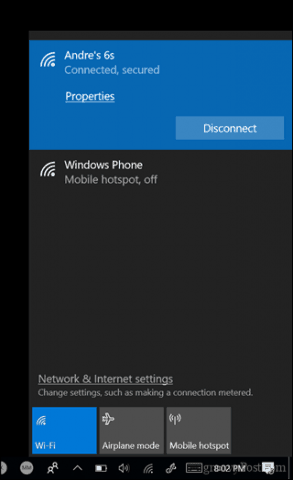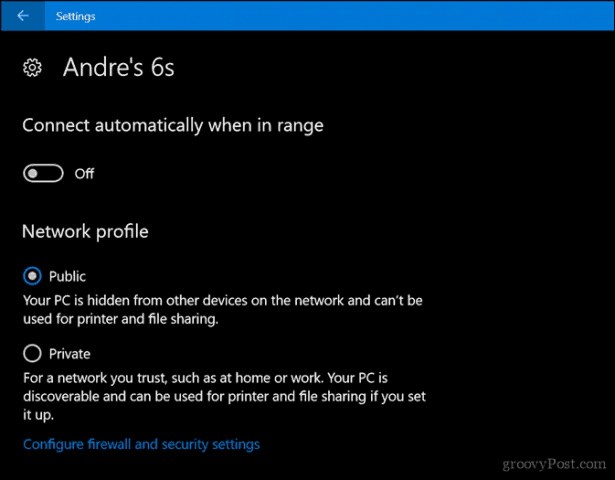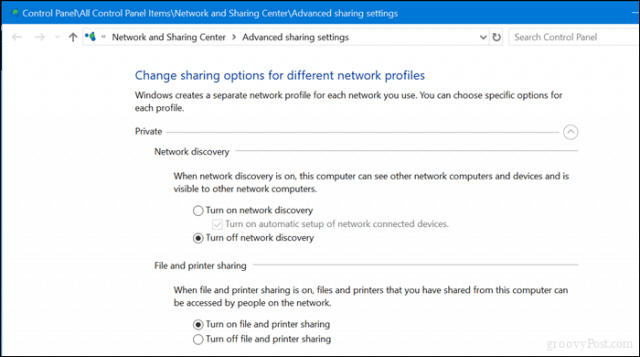How to Change from a Public to a Private Network in Windows 10
Changing from a public to a private network in Windows 10 is a simple process that can be completed in a few steps.
First, open the Start menu and select the Settings icon. In the Settings window, select Network & Internet. In the Network & Internet window, select the Wi-Fi tab on the left side of the window. Under the Wi-Fi tab, select the name of the network you wish to change from public to private.
Once the network is selected, a window will appear with the network’s details. At the bottom of the window, select the toggle switch next to Make this PC discoverable. This will change the network from public to private.
Finally, select the Save button at the bottom of the window to save the changes. The network is now set to private and can be used to share files and printers with other devices on the same network.
Understanding the Benefits of Changing from a Public to a Private Network in Windows 10
Windows 10 offers users the ability to switch from a public to a private network. This is a useful feature for those who need to protect their data and privacy while using the internet. By changing from a public to a private network, users can ensure that their data is kept secure and that their online activities are not visible to others.
When connected to a public network, users are exposed to a variety of potential security risks. Public networks are often unsecured, meaning that anyone can access the data that is being transmitted. This can lead to malicious actors intercepting and stealing sensitive information. Additionally, public networks are often used by hackers to launch attacks on other users.
By switching to a private network, users can protect their data and privacy. Private networks are secured with encryption, meaning that only authorized users can access the data that is being transmitted. This makes it much more difficult for malicious actors to intercept and steal sensitive information. Additionally, private networks are not used by hackers to launch attacks, making them much safer for users.
Another benefit of switching to a private network is that it allows users to access content that may be blocked on public networks. Many public networks block certain websites or services, such as streaming services or social media sites. By switching to a private network, users can access these sites without any restrictions.
Finally, switching to a private network can also improve the speed and reliability of a user’s internet connection. Private networks are typically faster and more reliable than public networks, as they are not as congested. This can be especially beneficial for those who need to access large files or stream content.
In conclusion, switching from a public to a private network in Windows 10 can provide users with a number of benefits. It can help protect their data and privacy, allow them to access content that may be blocked on public networks, and improve the speed and reliability of their internet connection.
Exploring the Security Implications of Changing from a Public to a Private Network in Windows 10
The transition from a public to a private network in Windows 10 can have significant implications for the security of a user’s system. A public network is one that is open to anyone, while a private network is one that is restricted to certain users. By changing from a public to a private network, users can gain greater control over who has access to their system and the data stored on it.
When a user connects to a public network, their system is exposed to a variety of potential security threats. Public networks are often unsecured, meaning that anyone can access the network and potentially gain access to the user’s system. This can lead to malicious actors gaining access to sensitive data or even taking control of the system. Additionally, public networks are often used by hackers to launch attacks on other systems, which can put the user’s system at risk.
By switching to a private network, users can gain greater control over who has access to their system. Private networks are typically secured with passwords or other authentication methods, which can help to prevent unauthorized access. Additionally, private networks are often monitored by the network administrator, which can help to detect and prevent malicious activity.
Finally, private networks can also provide users with greater control over the data that is shared on the network. By restricting access to certain users, users can ensure that only authorized individuals have access to sensitive data. This can help to protect the user’s system from potential data breaches or other malicious activity.
In conclusion, changing from a public to a private network in Windows 10 can have significant implications for the security of a user’s system. By switching to a private network, users can gain greater control over who has access to their system and the data stored on it, as well as greater control over the data that is shared on the network. This can help to protect the user’s system from potential security threats.
Troubleshooting Common Issues When Changing from a Public to a Private Network in Windows 10
When changing from a public to a private network in Windows 10, there are a few common issues that may arise. This article will provide troubleshooting tips to help you resolve these issues.
1. Network Discovery is Disabled: Network discovery is a feature that allows your computer to find other computers and devices on the same network. If this feature is disabled, you will not be able to access other computers or devices on the network. To enable network discovery, open the Control Panel, select Network and Internet, and then select Network and Sharing Center. Select Change advanced sharing settings, and then select Turn on network discovery.
2. Firewall Settings: Windows Firewall is designed to protect your computer from malicious software and hackers. When changing from a public to a private network, it is important to ensure that the firewall settings are configured correctly. To check the firewall settings, open the Control Panel, select System and Security, and then select Windows Firewall. Select Advanced settings, and then select Inbound Rules. Make sure that the rules are configured to allow the type of traffic you want to allow on the network.
3. IP Address Conflict: An IP address conflict occurs when two devices on the same network have the same IP address. This can cause connection issues and can prevent devices from communicating with each other. To resolve an IP address conflict, open the Control Panel, select Network and Internet, and then select Network and Sharing Center. Select Change adapter settings, and then select the network adapter you are using. Right-click the adapter and select Properties. Select Internet Protocol Version 4 (TCP/IPv4) and then select Properties. Select Use the following IP address and enter a unique IP address for the device.
By following these troubleshooting tips, you should be able to resolve any issues you may encounter when changing from a public to a private network in Windows 10.
Tips for Optimizing Performance When Changing from a Public to a Private Network in Windows 10
1. Update Your Network Drivers: Make sure your network drivers are up to date. This will ensure that your network is running at its best performance.
2. Disable Unnecessary Services: Disable any unnecessary services that are running on your computer. This will free up resources and help improve performance.
3. Disable Unnecessary Programs: Disable any unnecessary programs that are running on your computer. This will free up resources and help improve performance.
4. Disable Unnecessary Network Connections: Disable any unnecessary network connections that are running on your computer. This will free up resources and help improve performance.
5. Disable Unnecessary Network Protocols: Disable any unnecessary network protocols that are running on your computer. This will free up resources and help improve performance.
6. Disable Unnecessary Network Adapters: Disable any unnecessary network adapters that are running on your computer. This will free up resources and help improve performance.
7. Disable Unnecessary Firewall Rules: Disable any unnecessary firewall rules that are running on your computer. This will free up resources and help improve performance.
8. Disable Unnecessary Network Security Settings: Disable any unnecessary network security settings that are running on your computer. This will free up resources and help improve performance.
9. Optimize Your Network Settings: Optimize your network settings to ensure that your network is running at its best performance.
10. Monitor Your Network Performance: Monitor your network performance to ensure that your network is running at its best performance.
Comparing the Cost of Changing from a Public to a Private Network in Windows 10
The cost of changing from a public to a private network in Windows 10 can vary depending on the type of network and the resources needed to make the transition. For example, if you are transitioning from a public Wi-Fi network to a private home network, the cost may be minimal. However, if you are transitioning from a public wired network to a private wired network, the cost may be more significant.
When transitioning from a public to a private network, the cost of hardware and software must be taken into consideration. If you are transitioning from a public Wi-Fi network to a private home network, you may need to purchase a router and modem, as well as any additional hardware needed to set up the network. Additionally, you may need to purchase a subscription to a Virtual Private Network (VPN) service to ensure secure access to the private network.
In addition to the cost of hardware and software, you may also need to consider the cost of installation and setup. If you are transitioning from a public wired network to a private wired network, you may need to hire a professional to install the necessary hardware and configure the network. This cost can vary depending on the complexity of the network and the number of devices that need to be connected.
Finally, you may need to consider the cost of ongoing maintenance and support. If you are transitioning from a public to a private network, you may need to hire a professional to provide ongoing maintenance and support for the network. This cost can vary depending on the complexity of the network and the number of devices that need to be supported.
In conclusion, the cost of changing from a public to a private network in Windows 10 can vary depending on the type of network and the resources needed to make the transition. It is important to consider the cost of hardware and software, installation and setup, and ongoing maintenance and support when making the transition.






